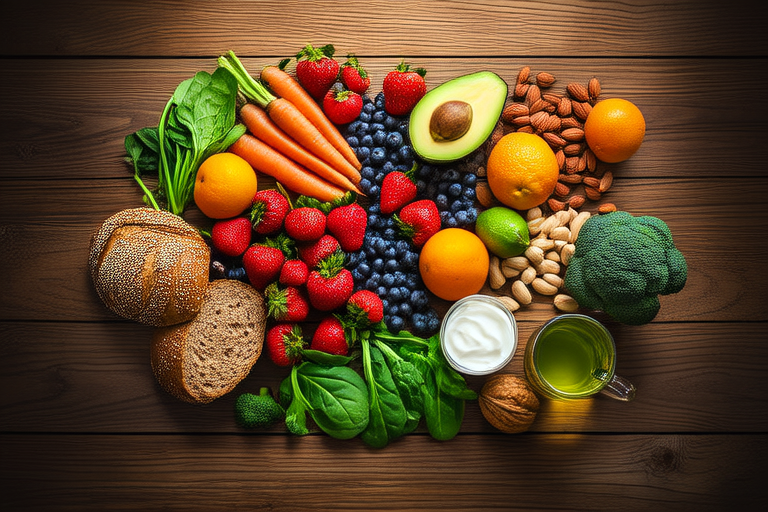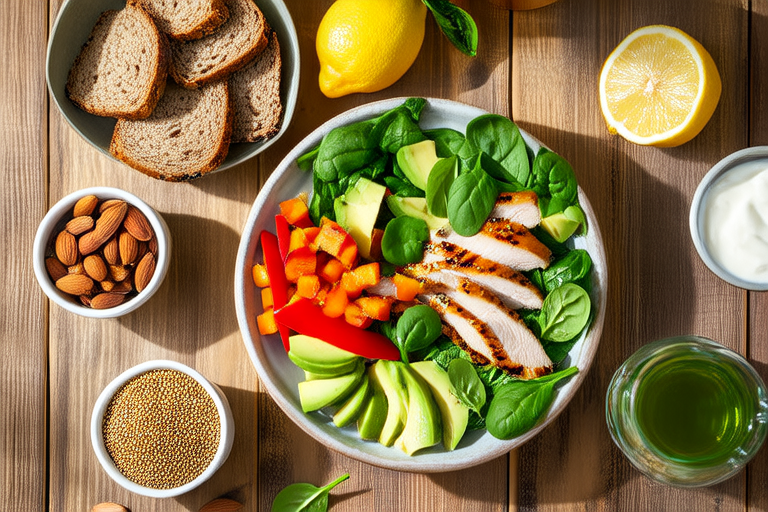10 Essential Guidelines for a Balanced and Healthy Diet
A balanced and healthy diet is crucial for maintaining overall well-being, supporting energy levels, and reducing the risk of chronic diseases. However, with so much conflicting information available, it can be challenging to know where to start. This article provides 10 practical, evidence-based guidelines to help you make informed dietary choices that support long-term health.
1. Prioritize Whole, Unprocessed Foods
Whole foods, such as fruits, vegetables, whole grains, nuts, seeds, and lean proteins, are minimally processed and retain their natural nutrients. These foods are rich in essential vitamins, minerals, fiber, and antioxidants that support your body’s functions. To incorporate more whole foods into your diet:
- Choose fresh produce over canned or frozen options when possible.
- Opt for whole grains like brown rice, quinoa, and oats instead of refined grains like white bread or pasta.
- Snack on raw nuts, seeds, or fresh fruit instead of processed snacks like chips or cookies.
2. Balance Macronutrients
Macronutrients—carbohydrates, proteins, and fats—are the building blocks of your diet. Each plays a unique role in maintaining energy levels, muscle repair, and overall health. Aim for a balanced intake by:
- Including complex carbohydrates like sweet potatoes, legumes, and whole grains for sustained energy.
- Incorporating lean protein sources such as chicken, fish, tofu, beans, and lentils to support muscle growth and repair.
- Consuming healthy fats from avocados, olive oil, nuts, and fatty fish to promote brain health and reduce inflammation.
3. Control Portion Sizes
Even healthy foods can contribute to weight gain if consumed in excess. Practicing portion control helps prevent overeating while ensuring you meet your nutritional needs. Here are some tips:
- Use smaller plates and bowls to naturally limit portion sizes.
- Measure servings of high-calorie foods like nuts or oils to avoid unintentional overconsumption.
- Listen to your hunger cues and stop eating when you feel satisfied, not overly full.
4. Stay Hydrated
Water is essential for digestion, nutrient absorption, temperature regulation, and many other bodily functions. Dehydration can lead to fatigue, headaches, and poor concentration. To stay hydrated:
- Drink water throughout the day, aiming for at least 8 cups (64 ounces) daily, or more if you’re physically active.
- Limit sugary beverages like soda and juice, which can add unnecessary calories.
- Include hydrating foods like cucumbers, watermelon, and oranges in your meals.
5. Limit Added Sugars and Salt
Excessive consumption of added sugars and salt can increase the risk of obesity, heart disease, and high blood pressure. Reducing these ingredients in your diet can significantly improve your health. Consider the following strategies:
- Read food labels to identify hidden sugars and sodium in packaged products.
- Replace sugary snacks with healthier alternatives like fruit or yogurt.
- Season meals with herbs, spices, and citrus juices instead of relying on salt for flavor.
6. Eat a Variety of Fruits and Vegetables
Fruits and vegetables are packed with vitamins, minerals, fiber, and phytonutrients that protect against disease. Eating a wide variety ensures you benefit from a broad spectrum of nutrients. To diversify your intake:
- Choose different colors of produce, such as red tomatoes, orange carrots, green spinach, and purple eggplant.
- Incorporate both raw and cooked vegetables into your meals for varied textures and flavors.
- Experiment with seasonal produce to enjoy fresh, flavorful options year-round.
7. Include Fiber-Rich Foods
Dietary fiber supports digestive health, regulates blood sugar levels, and promotes feelings of fullness. It’s found in plant-based foods like fruits, vegetables, legumes, and whole grains. Boost your fiber intake by:
- Adding beans or lentils to soups, salads, and stews.
- Choosing whole-grain bread and cereals over refined options.
- Snacking on fiber-rich foods like apples, berries, or popcorn.
8. Practice Mindful Eating
Mindful eating involves paying attention to what and how you eat, which can help prevent overeating and improve digestion. By slowing down and savoring your meals, you can better recognize hunger and fullness cues. Try these techniques:
- Turn off distractions like TV or smartphones during meals.
- Chew slowly and focus on the taste, texture, and aroma of your food.
- Pause halfway through your meal to assess your hunger level before continuing.
9. Plan and Prepare Meals Ahead
Meal planning and preparation can save time, reduce stress, and help you stick to healthier choices. Having nutritious meals ready reduces the temptation to opt for fast food or unhealthy snacks. Follow these steps:
- Create a weekly meal plan that includes breakfast, lunch, dinner, and snacks.
- Prepare large batches of staples like grains, roasted vegetables, or grilled proteins for easy assembly later.
- Store pre-portioned snacks like trail mix or cut-up veggies for quick access.
10. Allow for Flexibility and Enjoyment
A sustainable diet should include flexibility and enjoyment to avoid feelings of deprivation. Allowing yourself occasional treats or indulgences can prevent burnout and promote long-term adherence. Keep these points in mind:
- Adopt an 80/20 approach: Focus on healthy choices 80% of the time and allow yourself flexibility the remaining 20%.
- Experiment with new recipes and cuisines to keep meals exciting and satisfying.
- Practice moderation rather than restriction, especially during social events or holidays.
By following these 10 essential guidelines, you can create a balanced and healthy diet that supports your physical and mental well-being. Remember, small, consistent changes are more effective than drastic overhauls. Start implementing one guideline at a time, and gradually build habits that work for your lifestyle.










